Opinion & Analysis
“We are past the time of superior and inferior product lines”

What was true, still is true and is likely becoming even more true is this: equipment doesn’t make any difference. Or perhaps more correctly, when analyzed with a single criteria of performance, the consumer has more choices now than ever before, all of which are top-shelf options.
You may decide to file that little bit of wisdom in the “duh” file. I know I’m treading on hallowed ground here and I’m certainly not one to claim I haven’t fallen victim to a marketing scheme or two. But if we look at the golf industry at a macro level, the real story is parity. No one makes a bad product and in fact, pretty much every major original equipment manufacturer turns out high-quality products worthy of play by the most demanding players in the world: touring professionals.
We are past the time of superior and inferior product lines. Many of us still remember Phil Mickelson’s back-handed compliment to Tiger Woods calling Tiger’s Nike equipment “inferior.” But that was 10 years ago, and my how times have changed.
Now demand for certain product lines is now largely a function of perception, customization and past behavior. As such, we’ve also witnessed market consolidation and OEM’s playing their own version of “anything you can do, I can do pretty much the same thing.” Call it shared technology or imitation, either way we certainly in a place where “it’s all good.”
Golf Balls
In late 2000, Titleist released its ProV1 ball in Las Vegas. Its game-changing ball marked a paradigm shift from wound-core balls to solid-core balls. Billy Andrade won that event in Vegas and the race to catch up to Titleist was on. Unfortunately, for all would-be suitors, Titleist was well down the road and to this day still holds nearly 50 percent of the ball market worldwide. It’s a pretty nice complement when TaylorMade CEO Mark King commented, “We’re not going to get into a fight with Titliest, at least not for the ball. It’s what they do. They would defend it till their death.” Enough said.
Don’t let the market dominance figures lead you to believe that the performance difference is anything but razor thin. Last year’s FedExCup winner, Brandt Snedeker, is just fine with his Bridgestone Tour B330 ball and nearly $15 million in 2012 earnings. Bridgestone has been producing golf balls since 1935 and most people don’t realize that Nick Price won the 1994 PGA Championship and 1994 British Open using a solid core ball from Precept (division of Bridgestone). Currently, Bridgestone, the No. 1 ball fitter in golf, offers four Tour-level solid core balls.
Callaway got into the ball market in 2000 by hiring Chuck Yash, formerly with TaylorMade. During the last decade, Callaway has expanded its offerings partnering with aerodynamic specialists at Boeing to determine efficient and effective dimple patterns. Currently, Callaway offers a Tour-level ball for higher swing speeds (Hex Black) and one for lower swing speeds (Hex Chrome). They’ve recently also added the HEX Chrome +, which fits in between.
Wedges
Inspired by the personal airplane of tycoon Howard Hughes, Gene Sarazen developed the blueprint for the modern sand-wedge. This was the late 1920s. In 1988, Cleveland golf introduced its fifth generation wedge, the 588. They looked basically the same. Now, most OEM’s (Titleist, Cleveland, Nike, Mizuno, etc.) offer multiple lofts, bounce options, grinds and finishes.
For those desiring a wedge-experience once reserved only for Tour pros, Titleist offers its WedgeWorks program. Wedge guru Bob Vokey and his team will build you a one-of-a-kind wedge with your choice of loft, grind, finish and stampings. Titleist launched this initiative in August of 2011, and soon thereafter Cleveland followed suit with its iteration, aptly named “My custom wedge.” Of course, this level of service isn’t anything new for customers of Scratch golf, the boutique brand which started in 2003 and whose motto “Your game customized” defines their entire business model.
Irons
There have always been myriad options for players wanting maximum workability and minimum forgiveness. Like many of you, I have fond memories of my Wilson staff blades, Hogan Apex blades, Mizuno MP-29s and well, you get the idea. Fast forward to the new millenium:
In 2008, Titleist introduced the AP2 (Advanced Performance) line of irons, which endeavored to broach the players category of irons buy offering tour level workability while maintaining the solid feel of a forged iron and increased forgiveness on mis-hits. In order to accomplish this, Titleist used multiple materials including forged steel (feel), tungsten weights (increased MOI) and an elastomer insert (vibration dampening and optimal sound). According to Titleist, the result is an iron with great feel, Tour-level workability and a traditional players appearance from address or in laymen’s terms, an iron any really really good golfer will love.
Titleist got the early jump in the category, but here’s a few products from other OEMs that are in the same category as the AP2’s:
- Adams CMB
- Callaway X Hot Pro
- Cobra AMP Forged
- Mizuno JPX-825 Pro
- Nike VR_S Forged
- Ping Anser Forged
- TaylorMade Rocketbladez Tour
Fairway Woods
Whether you call it a fairway wood or a “fairway metal,” this category was once more about reliability than distance. It was in this environment that Tour Edge Exotics found a niche market and a cult following. The “CB” series of fairway metals featured a titanium combo-brazed face and hyper-steel body, both attributes still found in the fifth edition (CB5) of the player-oriented fairway wood. The company touted it as the longest fairway metal available, even offering a money-back guarantee. And it’s easy to offer a guarantee when you’re right. However, without a connection to a major OEM and a comparatively higher price tag, the company simply couldn’t access a majority of this newfound market.
Enter TaylorMade “RocketBallz,” or RBZ. They debuted in 2012 and promised golfers 17 yards of increased fairway metal distance. Heck, Phil Mickelson the face of Callaway, even put an RBZ 3 wood in play until Callaway could come up with something to kick it out. This year, RBZ Stage 2 fairway woods are promising 10 more yards on top of the 17 from last year, an assertion the OEM no doubt believes is “ballz-ier” than before. In addition, Callaway promotes its new X Hot line of fairway metals to be “longer from everywhere.”
Also, building on momentum from 2012 and its acquisition by TaylorMade, Adams has fixed a couple quality control issues in its distance fairway line (XTD) with the Super LS series that have a characteristic time (CT) that approaches 250. The legal limit as set by the USGA is 256.
Hybrids
In 2002, TaylorMade produced one of the first hybrids, the Rescue Mid, that gained significant acceptance on professional tours. But it has been Adams Golf that has built a loyal and significant following on the senior PGA Tour and now is the most played hybrid worldwide.
Right now, it’s impossible to find an OEM that doesn’t offer some kind of hybrid or rescue in its current line. They’re longer, more attractive and more versatile than previous models across the board.
Driver
TaylorMade introduced MWT (moveable weight technology) in 2004 with the R7 quad driver. Naysayers labeled the club gimmicky and over-hyped marketing snake oil. Such armchair analysts general fail to mention that the R7 was used in 50 percent of victories on the PGA Tour that year. While this was a significant departure from the rest of the driver industry, it was nothing compared to what TaylorMade did in 2011. Call it the great golfing whiteout. TaylorMade introduced the R11 with a matte white club head. Black was out and white was in. It almost seemed antithetical, or sacrilege or something, but it was definitely different.
The R11 also had MWT, ASP (an adjustable sole plate) and the ability to change effective loft, lie and shaft via its FCT (Flight Control Technology). The gauntlet had been laid down.
Again, skeptics decried the new white paint and called it uglier than sin; a fad with less shelf-life than a Kardashian marriage. TaylorMade went on to lead world-wide usage in 2011, an exclamation point on a decade of dominance. In 2013, TaylorMade debuted the its R1, a white-headed driver with crown graphics. Also into colored drivers is Cobra (blue, silver, white, red, black and orange), Nike Covert (Red), Adams LS (white) and Callaway (matte grey).
Putter
Putters are as individual as the player themselves. They’re function over form, more art than science — or so we thought. Patented on March 21, 1967, the Ping Anser putter is the most emulated putter design of all time. Scotty Cameron has had success with its similar Newport and Newport 2 putters, while Odyssey calls its version simply #2. That being said, the Anser is still the bar, still the blueprint to which all similar putters will be compared. It’s kind of like when a brand becomes so powerful, you forget to remember it’s a brand; think Band-Aid, Kleenex, ChapStick, Q-Tip and Anser.
Lately, there’s been a trend of “grooved” putter faces. What began in 1995 with C-Groove technology lead by European putter designer Harold Swash, has now led to textured or “grooved” putter faces from nearly every manufacturer.
The Takeaway
No matter how you slice this pie or skin this cat, each and every major OEM is gold-list worthy in the court of public opinion, and more importantly on the course where incomes are earned. Contrarians will say that equipment contracts are all about money, and to a degree this is true. However, money in the absence of performance simply does not jive in this game of meritocracy. The player who chases short term money in place of long term success will only realize the former. As much as some of us like to debate the minutia of spec tolerances, grinds, finishes and the endless list of what differentiates one product from another, the simple truth is you and I would have the same handicap regardless of where our OEM allegiances lie.
We know there are lies, damn lies and statistics, but consider this:
World Rankings (as of March 1, 2013) by primary OEM sponsor
1. Nike
2. Nike
3. Mizuno
4. Bridgestone
5. Ping
6. TaylorMade
7. Titleist
8. Bridgestone
9. Ping
10. Cobra
11. Ping
12. Callaway
13. Titleist
14. Nike
15. Titleist
16. Titleist
17. TaylorMade
18. Srixon/Cleveland
19. Srixon/Cleveland
20. TaylorMade
21. Ping
22. TaylorMade
23. Nike
24. Callaway
25. TaylorMade
I know the sample size isn’t ideal, so take it for what it’s worth, but based on the top-25 players in the world:
4 play Nike
2 play Srixon/Clevland
1 plays Mizuno
2 play Callaway
5 play Taylor Made
4 play Titleist
4 play Ping
1 plays Cobra
2 play Bridgestone
- LIKE1
- LEGIT0
- WOW0
- LOL0
- IDHT0
- FLOP0
- OB0
- SHANK3
Opinion & Analysis
The Wedge Guy: What really makes a wedge work? Part 1

Of all the clubs in our bags, wedges are almost always the simplest in construction and, therefore, the easiest to analyze what might make one work differently from another if you know what to look for.
Wedges are a lot less mysterious than drivers, of course, as the major brands are working with a lot of “pixie dust” inside these modern marvels. That’s carrying over more to irons now, with so many new models featuring internal multi-material technologies, and almost all of them having a “badge” or insert in the back to allow more complex graphics while hiding the actual distribution of mass.
But when it comes to wedges, most on the market today are still single pieces of molded steel, either cast or forged into that shape. So, if you look closely at where the mass is distributed, it’s pretty clear how that wedge is going to perform.
To start, because of their wider soles, the majority of the mass of almost any wedge is along the bottom third of the clubhead. So, the best wedge shots are always those hit between the 2nd and 5th grooves so that more mass is directly behind that impact. Elite tour professionals practice incessantly to learn to do that consistently, wearing out a spot about the size of a penny right there. If impact moves higher than that, the face is dramatically thinner, so smash factor is compromised significantly, which reduces the overall distance the ball will fly.
Every one of us, tour players included, knows that maddening shot that we feel a bit high on the face and it doesn’t go anywhere, it’s not your fault.
If your wedges show a wear pattern the size of a silver dollar, and centered above the 3rd or 4th groove, you are not getting anywhere near the same performance from shot to shot. Robot testing proves impact even two to three grooves higher in the face can cause distance loss of up to 35 to 55 feet with modern ‘tour design’ wedges.
In addition, as impact moves above the center of mass, the golf club principle of gear effect causes the ball to fly higher with less spin. Think of modern drivers for a minute. The “holy grail” of driving is high launch and low spin, and the driver engineers are pulling out all stops to get the mass as low in the clubhead as possible to optimize this combination.
Where is all the mass in your wedges? Low. So, disregarding the higher lofts, wedges “want” to launch the ball high with low spin – exactly the opposite of what good wedge play requires penetrating ball flight with high spin.
While almost all major brand wedges have begun putting a tiny bit more thickness in the top portion of the clubhead, conventional and modern ‘tour design’ wedges perform pretty much like they always have. Elite players learn to hit those crisp, spinny penetrating wedge shots by spending lots of practice time learning to consistently make contact low in the face.
So, what about grooves and face texture?
Grooves on any club can only do so much, and no one has any material advantage here. The USGA tightly defines what we manufacturers can do with grooves and face texture, and modern manufacturing techniques allow all of us to push those limits ever closer. And we all do. End of story.
Then there’s the topic of bounce and grinds, the most complex and confusing part of the wedge formula. Many top brands offer a complex array of sole configurations, all of them admittedly specialized to a particular kind of lie or turf conditions, and/or a particular divot pattern.
But if you don’t play the same turf all the time, and make the same size divot on every swing, how would you ever figure this out?
The only way is to take any wedge you are considering and play it a few rounds, hitting all the shots you face and observing the results. There’s simply no other way.
So, hopefully this will inspire a lively conversation in our comments section, and I’ll chime in to answer any questions you might have.
And next week, I’ll dive into the rest of the wedge formula. Yes, shafts, grips and specifications are essential, too.
- LIKE22
- LEGIT7
- WOW1
- LOL1
- IDHT2
- FLOP2
- OB1
- SHANK2
Golf's Perfect Imperfections
Golf’s Perfect Imperfections: Amazing Session with Performance Coach Savannah Meyer-Clement

In this week’s episode, we spent some time with performance coach Savannah Meyer-Clement who provides many useful insights that you’ll be able to implement on the golf course.
- LIKE0
- LEGIT0
- WOW0
- LOL0
- IDHT0
- FLOP0
- OB0
- SHANK0
19th Hole
Vincenzi’s 2024 RBC Heritage betting preview: Patrick Cantlay ready to get back inside winner’s circle

Just a two-hour drive from Augusta National, the PGA TOUR heads to Harbour Town Golf Links in Hilton Head Island, S.C. Hilton Head Island is a golfer’s paradise and Harbour Town is one of the most beautiful and scenic courses on the PGA TOUR.
Harbour Town Golf Links is a par-71 that measures 7,121 yards and features Bermuda grass greens. A Pete Dye design, the course is heavily tree lined and features small greens and many dog legs, protecting it from “bomb-and-gauge” type golfers.
The field is loaded this week with 69 golfers with no cut. Last year was quite possibly the best field in RBC Heritage history and the event this week is yet another designated event, meaning there is a $20 million prize pool.
Most of the big names on the PGA Tour will be in attendance this week with the exceptions of Hideki Matsuyama and Viktor Hovland. Additionally, Webb Simpson, Shane Lowry, Gary Woodland and Kevin Kisner have been granted sponsors exemptions.
Past Winners at Harbour Town
- 2023: Matt Fitzpatrick (-17)
- 2022: Jordan Spieth (-13)
- 2021: Stewart Cink (-19)
- 2020: Webb Simpson (-22)
- 2019: CT Pan (-12)
- 2018: Sotoshi Kodaira (-12)
- 2017: Wesley Bryan (-13)
- 2016: Branden Grace (-9)
- 2015: Jim Furyk (-18)
In this article and going forward, I’ll be using the Rabbit Hole by Betsperts Golf data engine to develop my custom model. If you want to build your own model or check out all of the detailed stats, you can sign up using promo code: MATTVIN for 25% off any subscription package (yearly is best value).
Key Stats For Harbour Town
Let’s take a look at key metrics for Harbour Town Golf Links to determine which golfers boast top marks in each category over their past 24 rounds.
Strokes Gained: Approach
Strokes Gained: Approach is exceedingly important this week. The greens at Harbour Town are about half the size of PGA TOUR average and feature the second-smallest greens on the tour. Typical of a Pete Dye design, golfers will pay the price for missed greens.
Total SG: Approach Over Past 24 Rounds
- Scottie Scheffler (+1.27)
- Tom Hoge (+1.27)
- Corey Conners (+1.16)
- Austin Eckroat (+0.95)
- Cameron Young (+0.93)
Good Drive %
The fairways at Harbour Town are tree lined and feature many dog legs. Bombers tend to struggle at the course because it forces layups and doesn’t allow long drivers to overpower it. Accuracy is far more important than power.
Good Drive % Over Past 24 Rounds
- Brice Garnett (88.8%)
- Shane Lowry (+87.2%)
- Akshay Bhatia (+86.0%)
- Si Woo Kim (+85.8%)
- Sepp Straka (+85.1%)
Strokes Gained: Total at Pete Dye Designs
Pete Dye specialists tend to play very well at Harbour Town. Si Woo Kim, Matt Kuchar, Jim Furyk and Webb Simpson are all Pete Dye specialists who have had great success here. It is likely we see some more specialists near the top of the leaderboard this week.
SG: TOT Pete Dye per round over past 36 rounds:
- Xander Schauffele (+2.27)
- Scottie Scheffler (+2.24)
- Ludvig Aberg (+2.11)
- Brian Harman (+1.89)
- Sungjae Im (+1.58)
4. Strokes Gained: Short Game (Bermuda)
Strokes Gained: Short Game factors in both around the green and putting. With many green-side bunkers and tricky green complexes, both statistics will be important. Past winners — such as Jim Furyk, Wes Bryan and Webb Simpson — highlight how crucial the short game skill set is around Harbour Town.
SG: SG Over Past 24 Rounds
- Jordan Spieth (+1.11)
- Taylor Moore (+1.02)
- Wyndham Clark (+0.98)
- Mackenzie Hughes (+0.86)
- Andrew Putnam (+0.83)
5. Greens in Regulation %
The recipe for success at Harbour Town Golf Links is hitting fairways and greens. Missing either will prove to be consequential — golfers must be in total control of the ball to win.
Greens in Regulation % over past 24 rounds:
- Brice Garnett (+75.0%)
- Scottie Scheffler (+69.9%)
- Corey Conners (+69.0%)
- Shane Lowry (+68.3%)
- Patrick Rodgers (+67.6%)
6. Course History
Harbour Town is a course where players who have strong past results at the course always tend to pop up.
Course History over past 24 rounds:
- Patrick Cantlay (+2.34)
- Cam Davis (+2.05)
- J.T. Poston (+1.69)
- Justin Rose (+1.68)
- Tommy Fleetwood (+1.59)
The RBC Heritage Model Rankings
Below, I’ve compiled overall model rankings using a combination of the five key statistical categories previously discussed — SG: Approach (24%), Good Drives (20%), SG: SG (14%), SG: Pete Dye (14%), GIR (14%), and Course History (14%)
- Shane Lowry
- Russell Henley
- Scottie Scheffler
- Xander Schauffele
- Corey Conners
- Wyndham Clark
- Christiaan Bezuidenhout
- Matt Fitzpatrick
- Cameron Young
- Ludvig Aberg
2024 RBC Heritage Picks
Patrick Cantlay +2000 (FanDuel)
With the exception of Scottie Scheffler, the PGA Tour has yet to have any of their star players show peak form during the 2024 season. Last week, Patrick Cantlay, who I believe is a top-5 players on the PGA Tour, took one step closer to regaining the form that’s helped him win eight events on Tour since 2017.
Cantlay limped into the Masters in poor form, but figured it out at Augusta National, finishing in a tie for 20th and ranking 17th for the week in Strokes Gained: Ball Striking. The former FedEx Cup champion will now head to one of his favorite golf courses in Harbour Town, where he’s had immaculate results over the years. In his six trips to the course, he’s only finished worse than 7th one time. The other finishes include three third places (2017, 2019, 2023) and one runner-up finish (2022). In his past 36 rounds at Harbour Town, Cantlay ranks 1st in Strokes Gained: Total per round at the course by a wide margin (+2.36).
Cantlay is winless since the 2022 BMW Championship, which is far too long for a player of his caliber. With signs pointing to the 32-year-old returning to form, a “signature event” at Harbour Town is just what he needs to get back on the winning track.
Tommy Fleetwood +3000 (FanDuel)
I truly believe Tommy Fleetwood will figure out a way to win on American soil in 2024. It’s certainly been a bugaboo for him throughout his career, but he is simply too talented to go another season without winning a PGA Tour event.
At last week’s Masters Tournament, Fleetwood made a Sunday charge and ended up finishing T3 in the event, which was his best ever finish at The Masters. For the week, the Englishman ranked 8th in the field in Strokes Gained: Approach, 10th in Strokes Gained: Ball Striking and 16th in Strokes Gained: Putting.
Harbour Town is a perfect layout for Fleetwood, and he’s had relative success at this Pete Dye design in the past. In his four trips to the course, he’s finished inside of the top 25 three times, with his best finish, T10, coming in 2022. The course is pretty short and can’t be overpowered, which gives an advantage to more accurate players such as Fleetwood. Tommy ranks 8th in the field in Good Drive % and should be able to plot his way along this golf course.
The win is coming for Tommy lad. I believe there’s a chance this treasure of a golf course may be the perfect one for him to finally break through on Tour.
Cameron Young +3300 (FanDuel)
Cameron Young had a solid Masters Tournament last week, which is exactly what I’m looking for in players who I anticipate playing well this week at the RBC Heritage. He finished in a tie for 9th, but never felt the pressure of contending in the event. For the week, Young ranked 6th in Strokes Gained: Off the Tee and 6th in Strokes Gained: Ball Striking.
Despite being one of the longest players off the tee on the PGA Tour, Young has actually played some really good golf on shorter tracks. He finished T3 at Harbour Town in 2023 and ranks 20th in the field in Good Drive% and 16th in Greens in Regulation in his past 24 rounds. He also has strong finishes at other shorter courses that can take driver out of a players hand such as Copperhead and PGA National.
Young is simply one of the best players on the PGA Tour in 2024, and I strongly believe has what it takes to win a PGA Tour event in the very near future.
Corey Conners +5500 (FanDuel)
Corey Conners has had a disappointing year thus far on the PGA Tour, but absolutely loves Harbour Town.
At last week’s Masters Tournament, the Canadian finished T30 but ranked 20th in the field in Strokes Gained: Approach. In his past 24 rounds, Conners ranks 3rd in the field in Strokes Gained: Approach, 3rd in Greens in Regulation % and 24th in Good Drive %.
In Conners’ last four trips to Harbour Town, his worst finish was T31, last season. He finished T4 in 2021, T12 in 2022 and ranks 8th in Strokes Gained: Total at the course over his past 36 rounds.
Conners hasn’t been contending, but his recent finishes have been encouraging as he has finished in the top-25 in each of his past three starts prior to The Masters, including an impressive T13 at The PLAYERS. His recent improvement in ball striking as well as his suitability for Harbour Town makes Conners a high upside bet this week.
Shane Lowry (+7500) (FanDuel)
When these odds were posted after Lowry was announced in the field, I have to admit I was pretty stunned. Despite not offering much win equity on the PGA Tour over the last handful of years, Shane Lowry is still a top caliber player who has the ability to rise to the top of a signature event.
Lowry struggled to score at The Masters last week, but he actually hit the ball really well. The Irishman ranked 1st for Strokes Gained: Approach on the week and 7th in Strokes Gained: Ball Striking. As usual, it was the putter that let him down, as he ranked 60th in the field in Strokes Gained: Putting.
Harbour Town is most definitely one of Lowry’s favorite courses on the PGA Tour. In his six starts there, he’s finished in the top 10 three times, including third twice. Lowry is sensational at Pete Dye designs and ranks 7th in Strokes Gained: Total in his past 36 rounds on Dye tracks.
Lowry is perfect for Harbour Town. In his past 24 rounds, he ranks 5th in Strokes Gained: Approach, 2nd in Good Drive% and 5th in Green in Regulation %. If he figures it out on the greens, Shane could have his first win in America since 2015.
Lucas Glover +12000 (FanDuel)
This is one of my weekly “bet the number” plays as I strongly believe the odds are just too long for a player of Glover’s caliber. The odds have been too long on Glover for a few weeks now, but this is the first event that I can get behind the veteran being able to actually contend at.
Glover is quietly playing good golf and returning to the form he had after the understandable regression after his two massive victories at the end of 2023. He finished T20 at The Masters, which was his best ever finish at Augusta National. For the week, Lucas ranked 18th for Strokes Gained: Approach and 20th in Strokes Gained: Ball Striking.
Over his past 24 rounds, Glover ranks 9th in Strokes Gained: Approach and 13th in Good Drive %. Harbour Town is a short course that the 44-year-old will be able to keep up with the top players on Tour off the tee. He’s played the course more than 20 times, with mixed results. His best finishes at Harbour Town include a T7 in 2008, but recently has a finish of T21 in 2020.
Glover has proven he can contend with the stars of the Tour on any given week, and this number is flat out disrespectful.
- LIKE30
- LEGIT5
- WOW2
- LOL1
- IDHT1
- FLOP2
- OB0
- SHANK2
-

 19th Hole1 week ago
19th Hole1 week agoDave Portnoy places monstrous outright bet for the 2024 Masters
-

 19th Hole3 weeks ago
19th Hole3 weeks agoThings got heated at the Houston Open between Tony Finau and Alejandro Tosti. Here’s why
-

 19th Hole2 weeks ago
19th Hole2 weeks agoTiger Woods arrives at 2024 Masters equipped with a putter that may surprise you
-

 19th Hole2 weeks ago
19th Hole2 weeks agoReport: Tiger Woods has ‘eliminated sex’ in preparation for the 2024 Masters
-

 19th Hole5 days ago
19th Hole5 days agoTwo star names reportedly blanked Jon Rahm all week at the Masters
-

 19th Hole4 days ago
19th Hole4 days agoNeal Shipley presser ends in awkward fashion after reporter claims Tiger handed him note on 8th fairway
-

 19th Hole4 days ago
19th Hole4 days agoReport: LIV Golf identifies latest star name they hope to sign to breakaway tour
-

 19th Hole2 weeks ago
19th Hole2 weeks agoAddiction, spinal fusion, and scam artists – Everything Anthony Kim revealed in candid interview with David Feherty

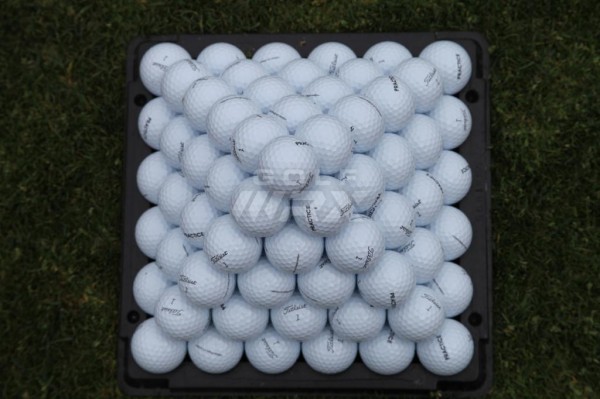

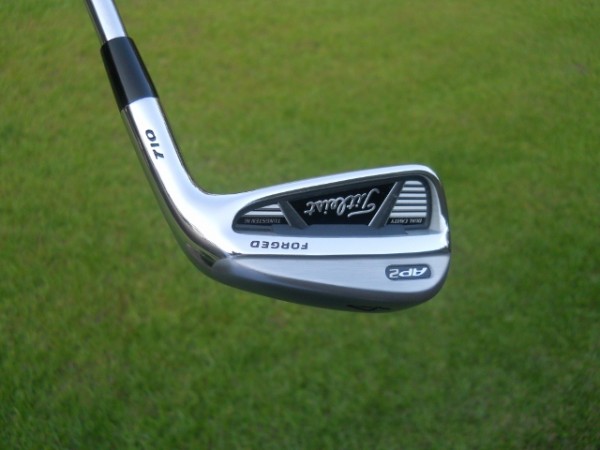
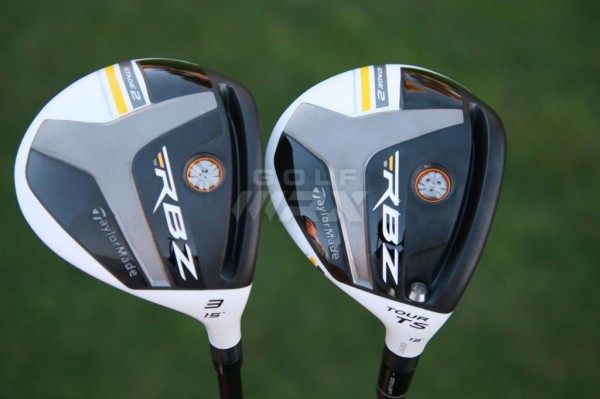
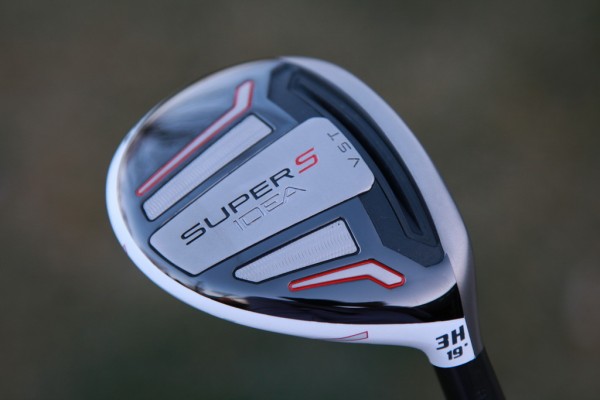
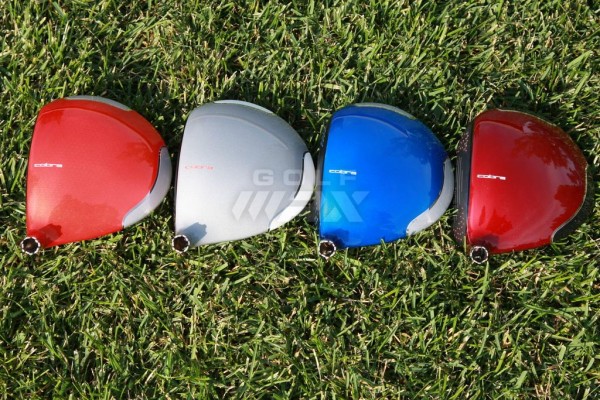
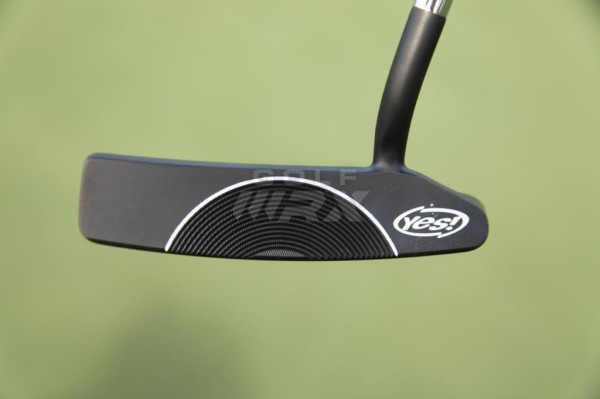




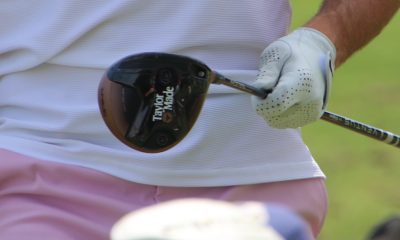

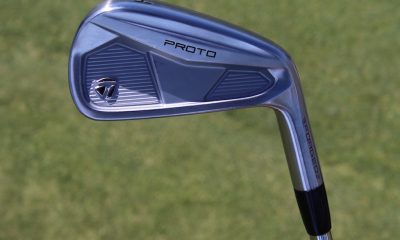

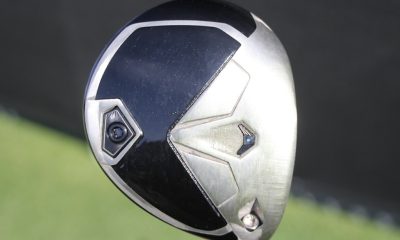

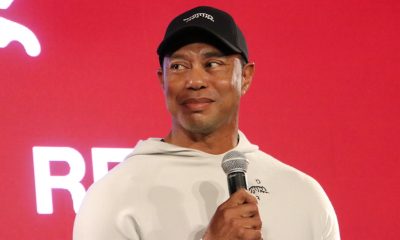

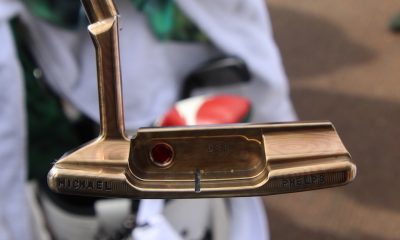













Pingback: Considering A Macgregor Tourney Junior Individual Woods
dg7936
Aug 10, 2013 at 9:12 pm
There may be MORE well-made products available today: however there are many more gimmicky products on the market also. Comparing product lines from the 80’s, most manufacturers had a small number of iron and wood models to manufacture versus the wide range of products available today..hybrids, gap and lob wedges, high-tech balls, exotic putters. So all of these may be well-made but will never create the following of the older companies who specialized in truly excellent products…hogan/macgregor/ram irons, powerbilt citation woods, etc etc. We have a more democratic market but also more marketing. Which does not really work, as the average handicap has remained the same for 20+ years. So where is the benefit to the average joe?
undermined
Apr 26, 2013 at 10:28 pm
All this “history” and no mention of Wilson or MacGregor. Wilson is still around and makes outstanding forged irons and nice wedges.
G
Apr 12, 2013 at 3:44 am
Except for the crap you can still buy at places like Walmart, Kmart, Target, Sports Authority, Sport Chalet, etc etc……. you know, them places where they still sell the inferior brands?
This article is bogus.
DJ Golf
Apr 3, 2013 at 2:54 am
When everyone is special, no one is special.
Matt
Mar 28, 2013 at 5:07 pm
Fact is Tiger switched from titleist also….everyone usually does.
Rory will figure it out!
Tiger did
PAul Roberts
Apr 5, 2013 at 9:33 am
Very true, however it took Tiger years’s to switch to a bag full of Nike (forget the putter), He went with Nike driver and ball but still used Titleist woods, irons and wedges for a few years until Nike built what he wanted/liked.
lbholly
Mar 27, 2013 at 3:27 pm
I’m Calling BS on all the history in this article you obviously knew nothing of the golf business pre 2008
gunmetal
Mar 25, 2013 at 12:09 am
Not to mention all of the offerings from brands that don’t pay pros to use their products…Wishon, KZG, Miura, Scratch, Scor, etc. All of that stuff is just as good as pay for play stuff, just not as recognizable.
Rich
Mar 24, 2013 at 12:02 am
Great article. Funny how a companies like mizuno,bridgestone, and cobra are in the top 25 yet they barely pay anyone out there to play their clubs unlike other companies!
NG
Mar 25, 2013 at 4:49 am
They would too, if they could….
footwedge
Mar 27, 2013 at 10:03 am
Also, the big brands that have many players on their payroll should be winning a proportinately larger share of tourneys, buy they don’t. Equalized statistics will emphasize the fact that no brand is far superior, regardless of their marketing budget.
marionmg
Feb 15, 2014 at 10:27 pm
I wouldn’t say Bridgestone barely paid DL3 to leave Titleist…just sayin’
Gabbo
Mar 23, 2013 at 9:30 pm
Good article. While there has been a lot of innovation the past 10 years, the overwhelming majority of stuff out made the last 5 years is REALLY good. And with a soft used market, everybody has access to excellent equipment for dirt cheap.
It’s a far cry from 20 years ago where you either ponied up big $$$ for top notch clubs or were stuck playing truly inferior discount clubs and clones.
chris
Mar 22, 2013 at 3:34 pm
Would agree from a pros perspective where they are fitted with the best of the best. From a retail perspective, fit and finish, quality of components (including real and made for shafts), and clubs built true to specs are miles apart. Most OEMs can’t even get the grips on straight….
Todd
Mar 22, 2013 at 2:18 pm
How can you put Nike as the world #1 (Rory) when he has been anything but since the switch. He earned the spot with Titleist, he is giving it away with Nike.
Blanco
Mar 23, 2013 at 11:15 pm
The author’s made a simple list showing who sponsors each player in the top 25… not an endorsement.
Keep beating the ‘Titleist rules/Rory’s a sellout’ to death–